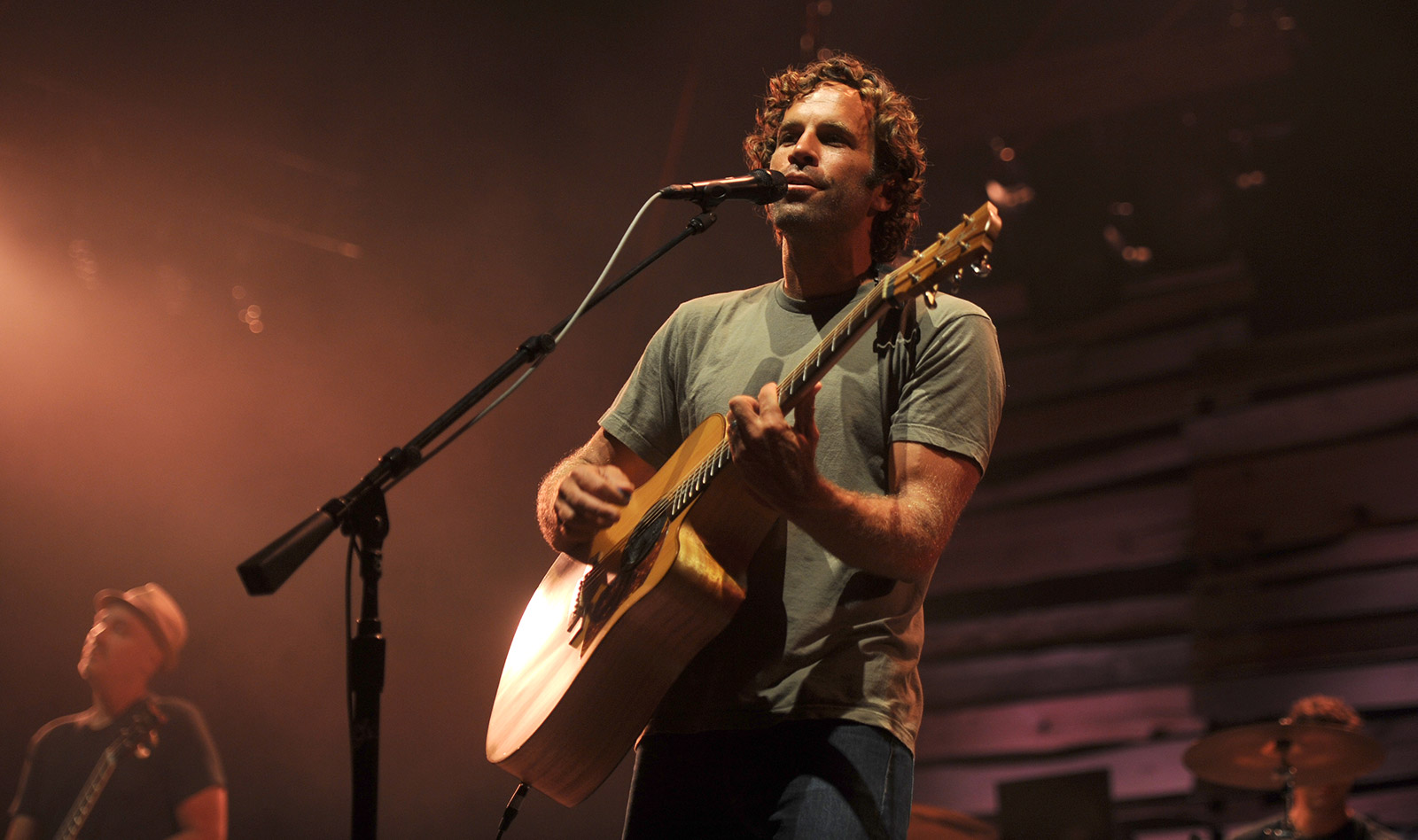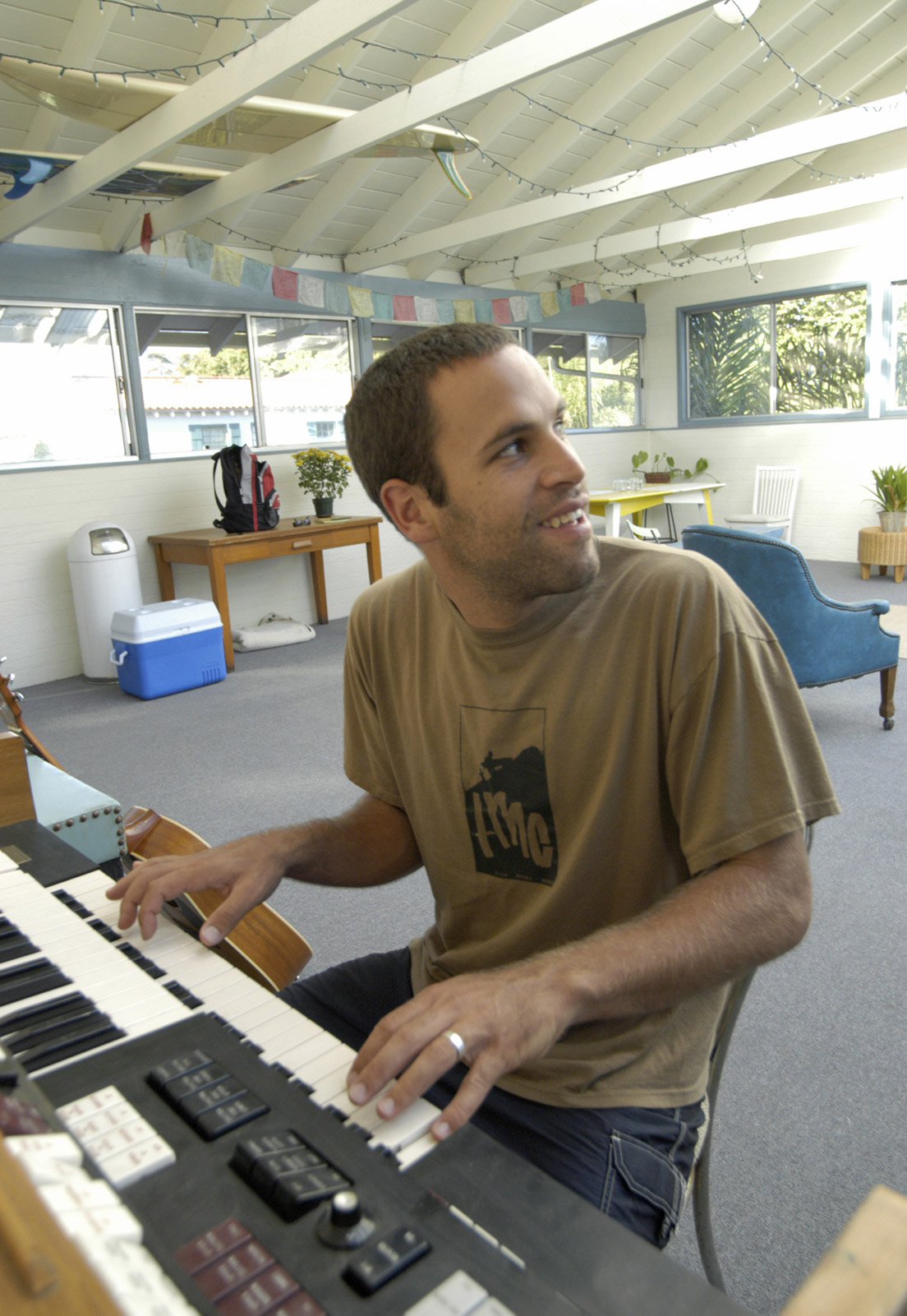Jack Johnson’s Montecito Memories
UCSB-Educated Rock Star Reflects on Beach Days and Watching Disasters from Afar

When I first interviewed Jack Johnson almost 20 years ago — just as he was on the verge of becoming a globally famous rock star — the Hawai‘i-born, UC Santa Barbara–educated songwriter was living with his wife, Kim Johnson, in a rented second-floor apartment near the Montecito coast. Years later, they bought their first home in that same area and eventually clocked nearly a decade of Santa Barbara life in that formative stage of his career, from the streets of Isla Vista to the sands of Butterfly Beach.
Today, though they’re raising their kids on the North Shore of Oahu, which is where Jack grew up, the Johnsons still consider Montecito and the greater Santa Barbara area their California home. So when the Thomas Fire raged nearby and then the mudslide hit — both of which they watched in horror from afar — they knew it was time to do something special to support the community.
That happens this Sunday, March 18, when Johnson plays a benefit show at the Santa Barbara Bowl along with ALO, Ben Harper, and other special guests. The concert sold out within hours, immediately raising loads of money for recovery, and is expected to generate even more during the concert itself. Families of mudslide victims will also be in attendance, as will first responders and their families, many of them seated in bleachers on the side of the stage.
I recently spoke to Johnson about his Montecito days, the disasters, and how experiences like this inform his music.
What first drew you to Montecito? Just the natural beauty. We’d been living in Isla Vista for a long time as we went to college, so we’d go there any chance we got for a hike in the mountains or down on the beach. That’s where Kim and I took long walks as we decided what to do on my record deals. It was a really exciting but really stressful time for me. All of the imagery from making those decisions were long walks along the beach in Montecito.

You live in Hawai‘i now, so where does Santa Barbara fit into your mind? We lived in Santa Barbara for a good nine years, including the years we went to school and the years that my wife taught at Dos Pueblos. I was making surf films, and we traveled for those, but Santa Barbara was where we were living.
I still think of Santa Barbara as my musical hometown. It was when I started playing at the Jolly Tiger, which is now Restaurant Roy, and that was our musical headquarters. We also played in-stores at places like Just Play Music. Those were really memorable shows for me. Playing to teenage music fans who could come and enjoy a free show — that was really a special time. That was right as it was all taking off.
Then eventually we started to play at the Arlington. As it grew every step of the way, it was Santa Barbara that was most supportive. Even though I don’t live there now, I do consider it home still.
Do you have any favorite spots to eat in Montecito? We go to Lucky’s a lot, and we love Los Arroyos. That’s fun for us because my wife and I met them when they opened their first location off of State Street. It was a really small place, and we went in the week they opened and got burritos. We’ve known them ever since they started, and it’s been cool to see them do so well. I like their style too — it’s always relatives, like nieces and nephews, working in there. That’s been nice to watch grow. And we used to always get breakfast at Peabody’s. That was our spot.
All right, now to the bad stuff. Were you following the Thomas Fire? We were following it from real far away because we were in Australia on tour. When we started hearing about it, we had so many good friends in Santa Barbara that we were keeping in touch with people daily, trying to get all the updates, making sure everyone was safe. Our house became a spot for a lot of friends from Ojai to come and stay out of the smoke. It felt really good to have a home base for lots of our friends that got displaced out of their homes. It was nice to be able to use the place for that.
We started thinking, “What could we do when things settle down for the community with music?” We started brainstorming a little bit, and once the rains came and the mud ….
Were you concerned about your house in Montecito? We have friends that live at our house full-time, so we knew we were in good hands. We were more concerned about the safety of everybody. It sounds cliché, but it was true: It wasn’t about our property; it was about the community.
When did you hear about the mudslide? I’d just got back to Hawai‘i from the tour, so I was really play-by-play on that one; we were only a couple hours’ time difference. Then the news started coming in, and the reality of how heavy it got was just heartbreaking. Even though we were across the ocean, we spent all of our next couple days fully immersed in the sadness of it all. We felt like we were right there. It was hard not to be there.
I was able to come to California because I did a recording down in L.A. My plan was to get up and assess things, but everything was on lockdown, so I couldn’t come up. I wanted to give friends hugs, but we couldn’t even get in. That was hard too.
What was your initial reaction? The moment we heard the news, we started reaching out to everybody that we do shows with at the Bowl. There are some places in the world where you don’t have that connection with the venue or the promoter. But Santa Barbara is where people like Moss Jacobs [the promoter] live, and I have the people at the Bowl’s numbers on my phone. We’ll send each other texts about completely different things. It’s nice knowing that I wasn’t reaching out to ask a favor of anybody.
What was the conversation about? We wanted to figure out how far down the line to put the show, where there was time to recover and heal, and at the same time we didn’t want to put it too far away. We can raise good funds, but we also wanted to use the music to heal and bring people together. It’s a little tricky to find that moment when it’s okay to do the show but not so far away that we can’t help with emotions.
What else is special about the show? We have seats for first responders, and we have seats for people who lost members of their family. It goes without saying what a hard time it is for those families. Some of them have been to shows at the Bowl before. That made us feel really good, that the music had been part of their lives already.
You’ll have to strike a delicate balance between being respectfully somber yet also make it a fun, positive show. You nailed it. We haven’t quite figured out what the set list will be. But I’ve played at friends’ [funeral] services before. You go in trying to do the songs that will touch the emotions best, but then you get there, and there’s a couple of kids yelling for the silly ones. And then you realize that this is also a day to celebrate life, even though it is about mourning the loss of life. It’s strange that’s how it goes. The things that heal the most are getting up and dancing and singing along.
Will these disasters lead to new songs for you? Definitely. I haven’t written one specifically about it. With these kind of events, I don’t sit down right afterward and write about them, but they soak into your mind and, over time, when it feels right, those emotions come out, even though it might not always be apparent to a listener. And it’s not always about sadness, but about how you saw people coming to the aid of someone who needed it. This one is gonna work its way into a lot of songs for me.
4•1•1
Jack Johnson & Friends play a sold-out benefit concert supporting Thomas Fire and flood recovery on Sunday, March 18, 6 p.m., at the S.B. Bowl (1122 N. Milpas St.). Call 962-7411 or visit sbbowl.com.



